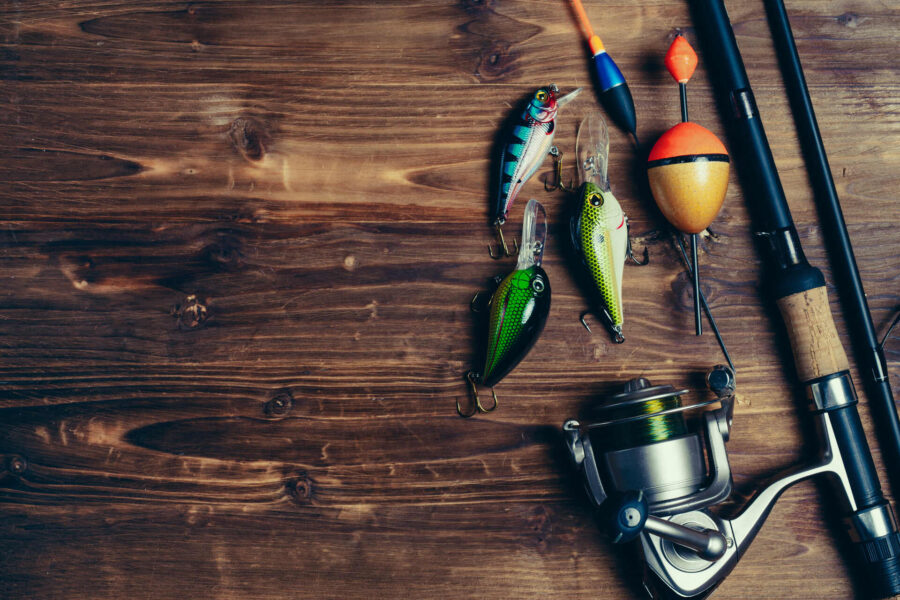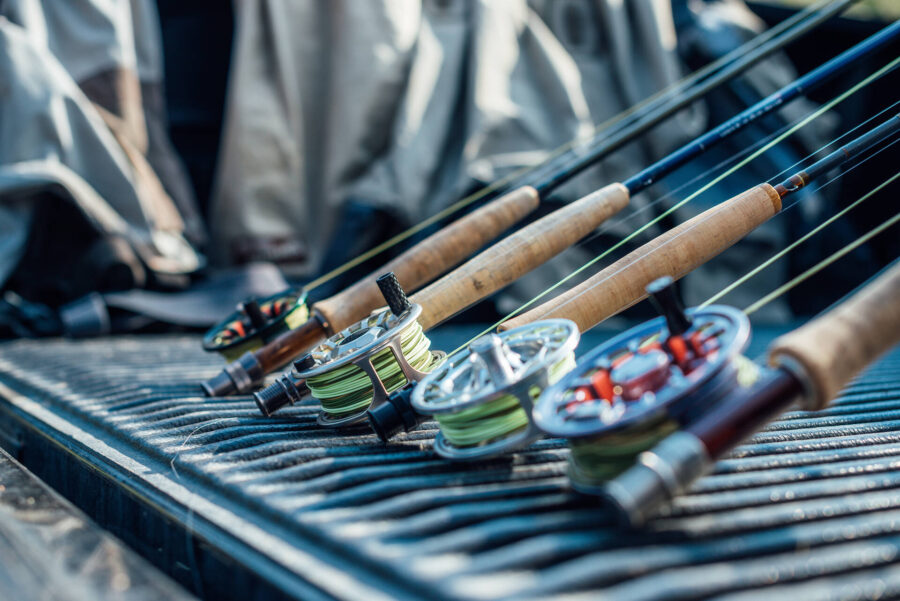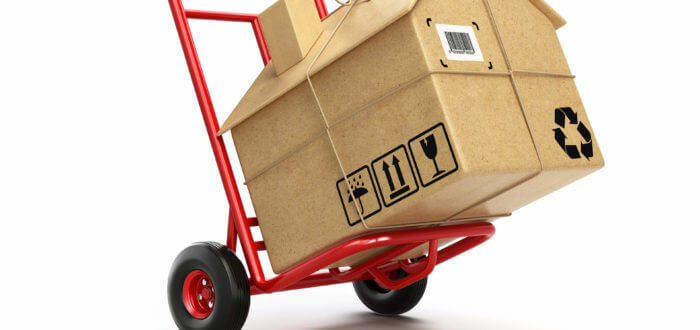

How to Pack a Fishing Rod? Expert Tips From Cross Country Movers
Posted in How-to,Moving Tips & Tricks on August 26, 2024
With adequate care, fishing rods can last for decades – but what if you have to ship them across the country when relocating? If you’re wondering how to pack a fishing rod for your move, you’ve come to the right place. In this guide, we will share tips and techniques every experienced angler needs to learn to ensure their fishing equipment stays in perfect condition.
How to Pack a Fishing Rod?
When packing a fishing rod for moving across the country, start by disassembling it into its smallest parts. Wrap each section individually with bubble wrap or packing paper, securing it with tape. Place the wrapped sections into a sturdy, rigid tube or a specialized fishing pole case for maximum protection.
If you have reels and other accessories, pack them separately in padded containers. Finally, label the tube or case clearly and mark it as fragile. Following these steps ensures your fishing rod stays safe and secure during your relocation to a new state.
Why Proper Packing Matters for Your Angling Equipment
Efficient packing is essential to ensure your gear arrives at your new home in perfect condition. Fishing poles and related equipment are often delicate and can be easily damaged during transit. Without the right packaging strategies, they can suffer from scratches, dents, or even breakage.
By wrapping your gear correctly, you protect your investment and maintain the performance of your equipment. Ensuring each component is securely wrapped and cushioned prevents unnecessary wear and tear. Proper packaging also makes it easier to organize and access your gear once you arrive at your new home, making unpacking after relocation smoother.
Common Concerns to Address When Moving Fishing Gear
When moving to a new state, your gear can be susceptible to several common types of damage. One major concern is physical breakage, particularly of fragile tips and guides. Scratches and dents are also frequent issues, often caused by gear shifting during transport in a relocation truck. Moisture damage is another risk, especially if the equipment is exposed to humid conditions. Finally, losing small parts like reels or accessories is a common problem.

Gather the Right Materials for Packing Your Fishing Rod
Packing your fishing pole properly starts with gathering the right packaging materials. Using appropriate supplies will ensure your rod and its components are well-protected during the move. Having the correct materials on hand can also make the packaging process faster. Here’s what you’ll need to safely move your angling rod.
- Bubble wrap,
- Packaging paper,
- Packaging tape,
- Rigid tubes or rod cases,
- Padded containers,
- Waterproof bags,
- Labels and markers.
Choose the Best Protective Cases for Your Angling Poles
Selecting the right protective case is crucial for ensuring your rod arrives undamaged. A high-quality case provides a sturdy barrier against impacts and environmental factors. Look for cases that are specifically designed for angling poles, as they offer features tailored to your needs. Hard cases are ideal for maximum protection, especially during long-distance moves, as they prevent bending and crushing.
Soft cases, while less rigid, offer more flexibility and are often padded for added safety. Some cases come with compartments for storing reels and other accessories, keeping everything organized and secure. When choosing a case, consider the length of your rod and ensure the case fits comfortably. Investing in a good protective case is a wise decision that will help maintain the condition and longevity of your angling rod during the move to a new city.

A Mover’s Tips for Disassembling and Packing Your Fishing Rod
Properly disassembling and wrapping your rod is essential for ensuring it arrives safely at your new home. By following a systematic approach, you can minimize the risk of damage and make the unpacking process easier. We’ve provided the necessary relocation tips needed to protect your gear, focusing on disassembly, wrapping, and securing each component.
Disassembling Your Fishing Pole for Safe Transport
Start by carefully disassembling your fish pole. Remove the reel and set it aside. If your rod is multi-piece, separate it into individual sections. Pay special attention to the delicate tips and guides, as they are prone to damage. Use a gentle twisting motion to disconnect each section, avoiding excessive force that could cause breakage. Once disassembled, clean each part to remove any dirt or debris that could scratch the surfaces during transport.
Wrapping and Securing Each Section
Once your angling pole is disassembled, wrap each section individually. Use bubble wrap or packaging paper to provide a cushioned layer around each part. Secure the wrapping with tape, making sure it is snug but not overly tight. For additional protection, place the wrapped sections into a rigid tube or specialized rod case. Clearly label the tube or case to indicate it contains fragile items.
Tips for Packing Fishing Reels and Accessories
Fishing reels and accessories also require careful packaging to avoid damage. Start by cleaning the reels and removing any lines. Wrap each reel in bubble wrap or packing paper, ensuring all parts are well-cushioned. Place the wrapped reels in a padded container or a sturdy box with additional padding material.
For smaller accessories like lures and hooks, use small, compartmentalized containers to keep them organized and prevent tangling. Clearly label all containers to indicate their contents, making it easier to unpack and set up your gear once you reach your destination.

Expert Techniques for Packing Different Types of Rods
Packing different types of poles requires tailored wrapping tips and techniques to ensure their safety and security during a move. Each type has unique characteristics that need specific attention to prevent damage. Whether you are wrapping spinning, fly, or telescopic rods, understanding the best practices for each will help maintain their condition and functionality. Here’s how to handle each type with care.
Packing Spinning Rods – Ensuring Safety and Security
Spinning rods are popular due to their versatility and ease of use. To pack them securely, start by removing the reel and any attached accessories. Clean the rod to remove any dirt or debris. Wrap each section of the pole individually with bubble wrap, focusing on the delicate guides and tips. Don’t be afraid to use plenty of bubble wrap. Secure the wrapping with packaging tape.
Place the wrapped sections in a rigid tube or a hard case designed for fishing poles. Add extra padding at both ends of the tube to prevent movement. This method ensures that your spinning rods are well-protected from impact and pressure during transit.
How to Pack Fly Rods – Special Considerations
Fly rods are typically longer and more delicate than other types of poles, requiring special care. The first few steps are regular. Begin by disassembling the rod into its individual sections. Clean each part thoroughly. Wrap each section with bubble wrap or packaging paper, paying extra attention to the tips and guides.
Use a rod sock or a cloth sleeve for additional protection before placing the wrapped sections in a rigid tube or a specialized fly rod case. Make sure the case is well-padded and has a secure closure. Clearly label the case to indicate that it contains fragile items.
Protecting and Packing Telescopic Rods
Telescopic rods are convenient for travel due to their collapsible design. However, their multiple joints and sections can make them prone to damage. Start by collapsing the pole completely and cleaning it. Wrap the entire pole in bubble wrap, ensuring all joints and sections are well-protected.
Secure the wrapping with packaging tape and place the wrapped rod in a sturdy, rigid tube or a hard case designed for telescopic rods. Add padding at both ends of the tube to prevent shifting. Label the case clearly to indicate its contents. By following these steps, you can ensure that your telescopic rods remain secure and intact during the move.

Tips for Labeling Your Packed Fishing Poles
Proper labeling and organization of your packed poles are crucial for ensuring they remain safe during the move and are easy to access upon arrival. To keep everything in order, start by using clear labels on each box and rod case, making sure to indicate the contents and their fragility.
It’s essential to write with a permanent marker or use printed labels to prevent smudging or fading. Marking each box as “Fragile” and “Handle With Care” will alert your hired movers to be extra cautious with your gear. Additionally, specifying the type of gear inside, such as “Spinning Rods,” “Fly Rods,” or “Reels and Accessories,” helps you and the movers identify the contents without having to open the boxes.
Organizing Packed Fishing Poles for Easy Access
Organizing your rods by type and packing similar items together makes it easier to find specific items when you unpack. Place the most frequently used poles in easily accessible locations within the truck to ensure quick access. Creating an inventory list of all packed items and numbering each box with corresponding contents on your list will further streamline the process.
Choose the Right Moving Service for Transporting Fishing Equipment
When selecting a moving service, prioritize companies experienced in handling delicate items when moving cross country. Companies like Cross Country Movers use quality packing materials and have movers who are well-trained and experienced. Check reviews and testimonials to gauge their expertise in safely transporting fragile items.
Benefits of Using Professional Moving Services
Professional moving services offer several advantages when it comes to transporting poles and other angling equipment. Moving companies have properly trained personnel who understand the importance of proper packing assistance and handling techniques. Hiring professionals saves you time and effort, allowing you to focus on other aspects of your relocation while ensuring your gear arrives safely at your new home.
Questions to Ask Your Movers About Transporting Fishing Equipment
Before hiring a moving company, ask specific questions to ensure they can meet your needs. Asking these questions helps you assess the expertise of the long-distance movers in question and ensures they can safely transport your rods and equipment to your new location. Here’s what to ask before you book cross-country moving services:
- Do you have experience moving fragile items like fishing poles?
- What types of packaging materials do you use for delicate sports equipment?
- What insurance options do you offer to protect valuable items during transit?
- How will you handle and transport fishing reels and accessories?

Reach Out to Cross Country Movers for a Seamless Long-Distance Moving Experience
Reach out to Cross Country Movers for a seamless moving experience with your valuable fishing gear. Our specialized packing service ensures your equipment is transported safely and securely. Benefit from our expertise in handling delicate items and our commitment to using high-quality packaging materials. Enjoy peace of mind knowing your gear will arrive at your new home in pristine condition, ready for your next fishing adventure. Contact us today to book our services.





